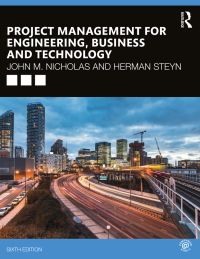a. Comment on the reporting structures and responsibility for audits and reviews. b. Who should have provided
Question:
a. Comment on the reporting structures and responsibility for audits and reviews.
b. Who should have provided quality guarantees?
c. What planning processes and techniques would have been helpful regarding the roles of the various stakeholders?
Ten South African cities were selected for hosting the FIFA 2010 World Cup soccer games. In some cities, existing soccer stadiums had to be upgraded, while in others, new stadiums had to be built at a cost of approximately R17b (approximately US$2.4b). A centerpiece stadium for the games is the newly constructed Cape Town Stadium shown in Figure 10.5. The requirements for the oneoff FIFA matches typically far exceed what would be required by stadium owners after the games ended. For example, for each stadium, FIFA required provision for 2,000 journalists for the final game, whereas an ordinary international match would draw only about 200; normally a stadium would require about ten broadcasting positions, but FIFA required 150. It therefore made sense to design facilities for normal use after the games and to meet the temporary FIFA requirements by adding temporary items called “the Overlay.” The Overlay, which would be removed after the event, included extra commentary positions, press desks, security equipment, hospitality and other tents, as well as numerous additional cables and other equipment. It was obviously easier to design accommodations for the Overlay in new “greenfield” stadiums than in existing stadiums that had to be upgraded.
Step by Step Answer:

Project Management For Engineering Business And Technology
ISBN: 9780367277345,9781000092561
6th Edition
Authors: John M. Nicholas , Herman Steyn




